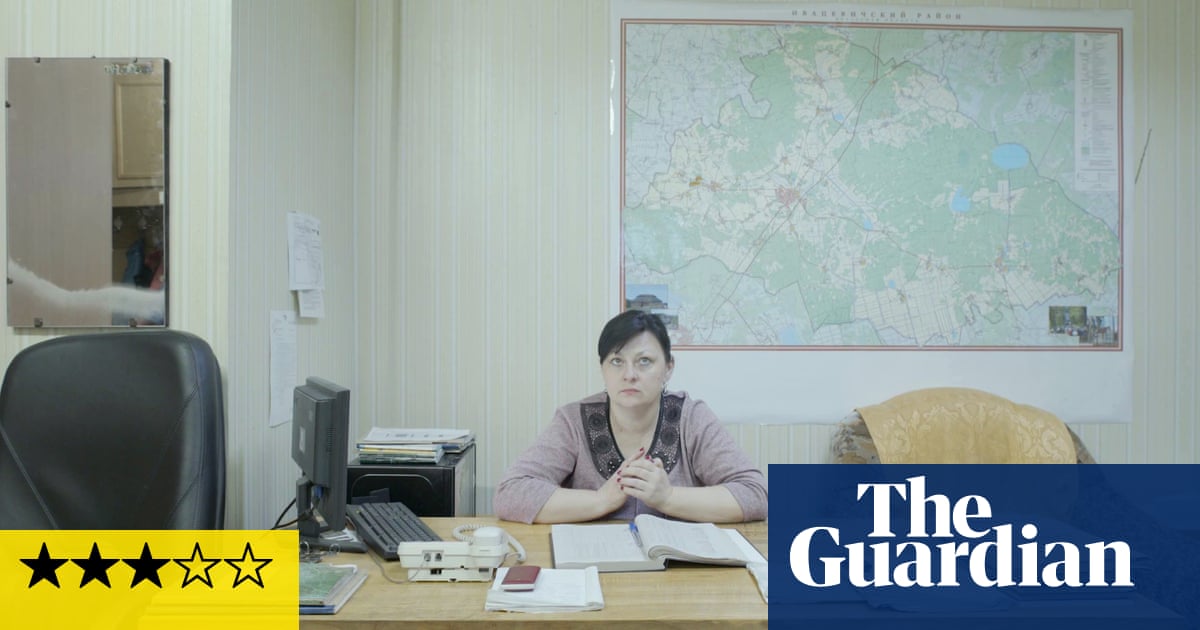
There was no honking traffic on the A303 near Stonehenge when John Constable captured the monument in 1835, no visitor centre, no crowds circling the perimeter in an endless flow. In his watercolour, the site stands alone and utterly mysterious, with just a handful of sightseers dwarfed by colossal semi-collapsed stones. But the real drama is in the sky: an ever-shifting veil of blue, shot through with white and rippling with energy like an electric field. As an observation of nature, it makes no sense, in particular the two immense arcs that cut through the atmosphere, plunging down upon the stones. These spectacular sights have no origin in the natural world: they have come from inside the painter.
Late Constable, the much-awaited show at the Royal Academy in London, tells the story of an artist losing his cool – and discovering an inner fire so strong that it compelled him to make modern art in the early 19th century. Constable believed when he was young that a painter should simply record what he sees.
Born in 1776, he rejected the romantic and gothic cliches of the time to paint his own locality in Suffolk and his later home at Hampstead, then a village north of London, with a raw truth. He pioneered painting in the open air, direct from nature. But in this wuthering exhibition, you see him discover the cracks in reality – and fall right through them.
It starts with some of Constable’s cloud studies, little oil sketches of the sky above his head. These appear to be scientific observations of the weather: untainted observations of the furry white formations up there in the blue (it’s the perfect British art subject: clouds). But later in the exhibition, there’s a drawing that puts these apparently simple pictures in a new light. It is a sketch of yet more clouds – brooding and gathering, their surfaces flecked with squiggles that could be birds or imaginary scars on the sky.
But this work, called Cloud Study with Verses from Broomfield, is not just a meteorological analysis – for below his darkening sky, Constable has scribbled a long quotation from the poet Robert Broomfield, famous in the early 1800s as a rural worker who wrote about nature: “The misty vapours catch the silverlight … ” Far from being a quiet observer of the rustic scene, Constable identifies here as a painter-poet, seeing a mirror of his emotions in the natural world.
And in case you have a crude conception of Constable as a “conservative” cheerleader for a mythically unchanging English countryside, note that he is quoting a working-class writer. On the evidence of this exhibition, the Turner prize should be relaunched (and God knows it needs a jolt) as the Constable prize – for Constable in his later works is the true radical, the true modernist. This sketch explicitly tells us how he came to see himself: a Romantic painter, a poet in paint.
You see him at his most confoundingly poetic in two versions of his big canvas The Leaping Horse, hung spectacularly side by side. Constable loved to make his rapid, condensed oil sketches on pieces of board – but to get recognition at the Royal Academy’s annual exhibition, he knew he needed to splurge on canvas, large ones he called his “six-footers”.
The Leaping Horse is a tantalising, unforgettable glimpse of a lost rural world. It’s not a big story about war or royalty or the famous. Instead, a youth on a horse is towing a barge through a lock on a country canal. His horse rears up, while a silver tree burns like magnesium against the steamy clouds. On the boat, a red-coated man seems to be in charge (an old soldier?) while a woman, also in what may be a veteran’s red jacket, looks after her child at the prow.
Yet if you look at the equally large oil sketch beside it, the scene appears to have melted. Trees collapse in fistfuls of black leaves, the horse is a brown smear, the sky an explosive, jagged foreboding of mayhem. There’s no woman on the boat but, instead, two dark silhouettes near the stern. It’s like a nightmare version of Constable’s rural dream.
This contrast between composed, beautiful scenes and their despairing doubles recurs again and again in this ground-shifting show. From our 21st-century perspective, it seems that the broken, scarred, morbid versions of such works as Hadleigh Castle must be the later interpretations. Yet these are actually the preparatory works, the full-sized oil sketches. When Constable produces his finished six-footer to exhibit at the Royal Academy show, he balances the light and clarifies the details – in short, he makes it more acceptable as a picture for polite society in the 1820s and 30s. Hadleigh Castle loses the scratched furious sky and menacing birds that make the earlier sketch so bleak. It becomes almost picturesque in the finished canvas.
What we are seeing is an artist attempting to control volcanic emotions. Constable aspired to give his scenes a harmony and fullness that was the ideal of landscape painting from the Renaissance onwards, perfectly expressed by the French painter Claude, whose classical compositions were among the first art Constable saw.
Not that there’s anything wrong with a landscape you can escape into like a summer daydream. The Cornfield, lent by the National Gallery, is a glorious window on a vanished pre-industrial age: a country lane opens on to a golden landscape, a shepherd boy drinks from a fresh pure stream as his dog looks after the flock. It’s an idyll. But rather than sniffily point out that Constable’s perfect countryside is a nostalgic fantasy, how about seeing in such scenes the last lovely glimpses of the world before industrialism took over? Constable was sensitive to the emissions starting to poison the skies: he hated London’s smoke and, in his painting The Opening of Waterloo Bridge, included a malign factory belching pollution.
So even Constable at his most daydreamy is a modern artist now, mourning a world the factories were already staring to destroy. Everything he loved is in the past. His nostalgia is agonising. The Glebe Farm is a lovely hovel, a fairytale home – but in the oil sketch, it’s swallowed by a tangled mass of trees and storm-filled clouds. The night is coming. A Farmhouse Near the Water’s Edge has a sky like smashed glass. White shards glitter against greyness. It is as apocalyptic as an El Greco, as fragmentary as cubism. For this exhibition even makes Constable look a little like the godfather of the French avant garde. That impossible sky doesn’t just anticipate the plein air paintings of Monet or Renoir but, in its crystalline abstraction, the broken world of Cézanne and the convulsed nature of Van Gogh.
Constable balances his two selves, the wild inner Romantic and the rational painter who loved Claude’s classicism, in his masterpiece Cenotaph to the Memory of Sir Joshua Reynolds. It is an autumn view of the estate of Sir George Beaumont, a wealthy art collector who showed the young Constable his Claudes and encouraged his artistic ambitions. In the depths of a dense planted wood, we see the stone monument Beaumont erected to Reynolds, the Royal Academy’s founder. It seems an almost excessively emotional act – Reynolds was a rich artist who died in his bed, not a war hero slain in battle - but that very hysteria is what makes the painting so powerful.
Since it is a cenotaph, an empty tomb, Constable can fill it with as many ghosts as he likes. He mourns Beaumont, who was dead when he painted this, as well as his wife. Death and sorrow gather in the fallen brown leaves of a wood, so thick you walk out of the exhibition on a carpet of autumnal grief.
But you can’t avoid comparisons with Turner. And here at the Royal Academy, they did have a showdown at one of its exhibitions, when Turner looked at Constable’s entry then added a brilliant blast of red to his own seascape to put his rival in the shade. This time the tables are turned. Looking at Constable’s seas, it’s obvious he is trying to compete with Turner. And finally, he pulls it off, with Rainstorm Over the Sea.
It must have started out as a careful composition: the beach in the foreground, the distant sails on a fairly calm sea, all depicted sombrely. But like a sudden transformation in the weather, he has a change of heart. Out of the gathering cloud, Constable creates his own blast of rain, falling in fast streaks of black and white. All those mighty seas by Turner are put in their place by this simple swerve of the brush, full of the roar of nature and the turbulence of Constable.












